Crater Lake and Oregon Waterfalls (Oct. 2022)

Welcome to Crater Lake, created over 7000 years ago when Mount Mazama blew its top off. It is the deepest lake in the U. S. and is filled only by rain and snow.

Though Watchman’s Peak is a steep hike, the view is well worth the effort.

Unfortunately, smoke from all the area forest fires greatly diminished the visibility.

Luckily, we had time the second day to repeat the hike as the day was windy and blew the smoke off the lake. Repeating the strenuous incline was worth it!
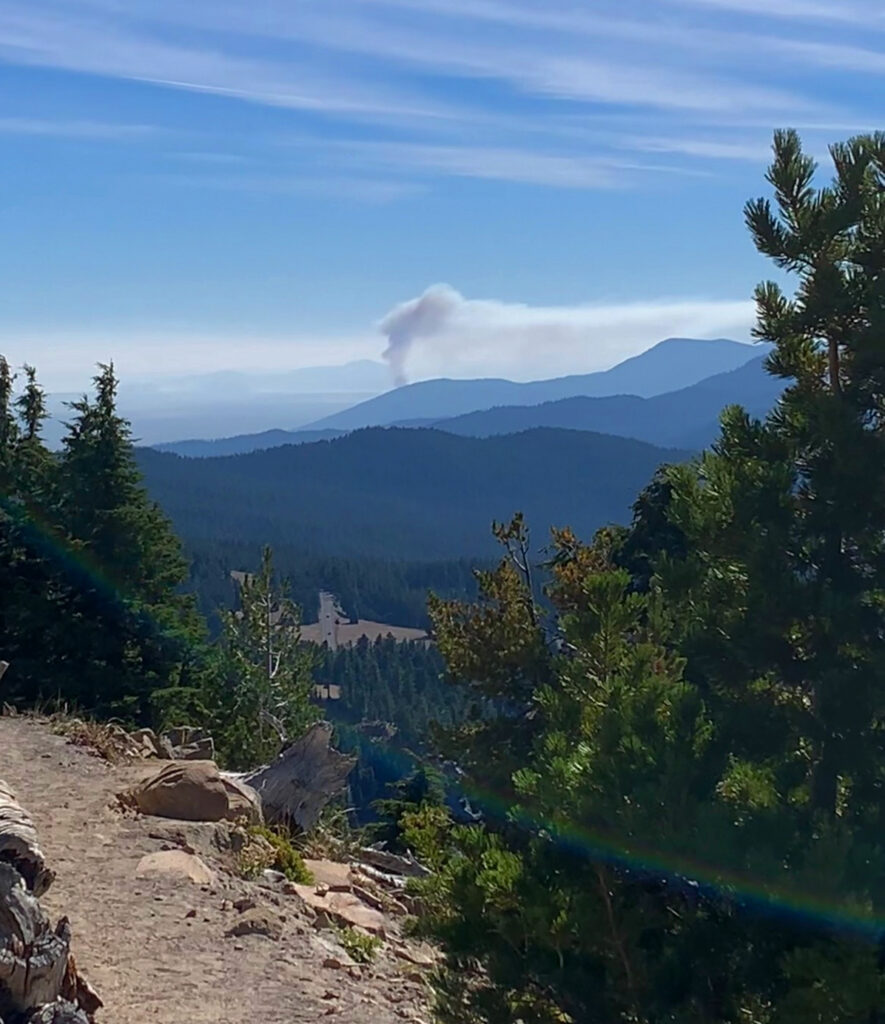
Fortunately, this plume of smoke was blowing in a different direction!

We were surprised by the vast remnants of volcanic activity everywhere in the park. Each of these would have been either a steam vent with now petrified ash or a small lava flow.

Mystery Island is the most prominent feature in Crater Lake.

Crater Lake is known for its clear still water. here probably 20 or more feet are visible under the water.

The bathtub ring is created when the water level is low and the mineral deposits along the shoreline are visible.

Pumice Castle, or Castle Rock, formed when lava, pumice, and other rocks welded together; the feature then eroded into its current shape.

Crater Lake is known for the stillness of the water which creates a magnificent mirror.

Plaikni Falls, a fairly easy 2 mile out and back hike, in a glacier carved cliff of petrified volcanic ash

Phantom Ship truly looks like a phantom ship rising out of the smoke.

The same Phantom Ship without the smoke

Phantom Ship is a spectacular geologic formation, seen easily from with Phantom Ship Overlook or Sun Notch Trail.

Crater Lake National Park is known for its old world pine and fire trees. Here is a sample of the size of a fallen trunk.

Taken on Sun Notch trail showing the magnitude of the terrain

The Pinnacles is an area where a valley filled with volcanic ash, steam vents coming up through the ash solidified the ash, then eroded away, leaving petrified chimneys.

Some of the chimneys filled in while others are still hollow.

Godfrey Glen has a similar geologic history but was not a valley; the pinnacles are more spaced and more solid.
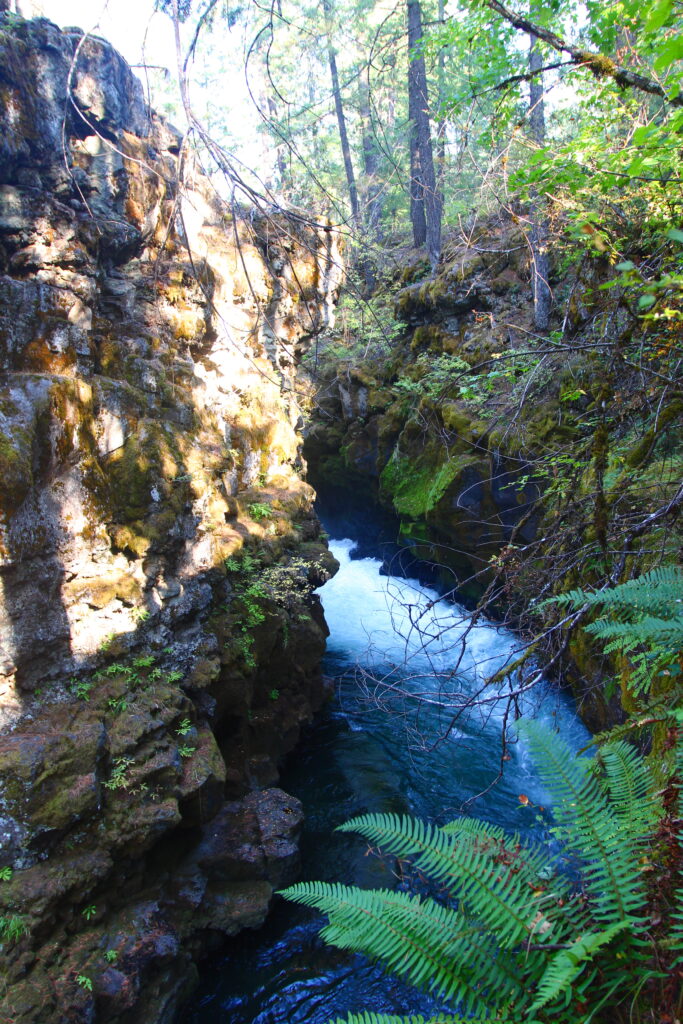
Rogue River Gorge created as the rushing Rogue River erodes its way through basalt lava

Easily viewed with a stroll in the path right off the parking lot

Mill Creek Falls Scenic Area, Prospect Oregon, not far from Crater Lake National Park, began our Oregon waterfalls.

Pearsony Falls – all the Mill Creek Falls Scenic Area waterfalls are short easy jaunts.

Mill Creek Falls

Beautiful base of Mill Creek Falls

Barr Creek Falls were more hidden across the ravine.

Barr Falls also has a magnificent base.
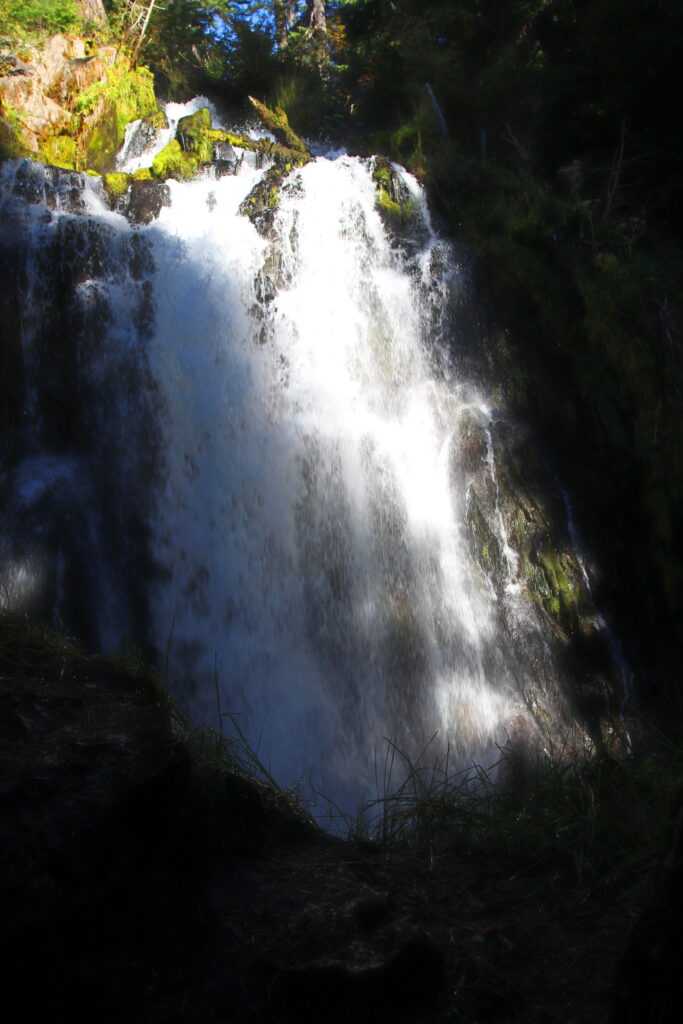
National Creek Falls, just west of Crater Lake National Park, – beautiful but not as fill as it sometimes is

Highway 138 – Umpqua National Forest – driving down the highway is a series of easy to access waterfalls, beginning with this beauty: Clearwater Falls

Whitehorse Falls

Toketee Falls

Some nice fall color along the way

Trail of Ten Falls, Silver Springs State Park, Oregon’s largest state park,

Depending on which way one starts the trail to see all the falls, South Falls is the first one.

South Falls is one of the falls where the trail continues behind the fall.

Lower South Falls, through the mossy trees as this forest is a temperate rainforest.

Lower South Falls, front view

Lower South Falls from behind the falls

North Falls
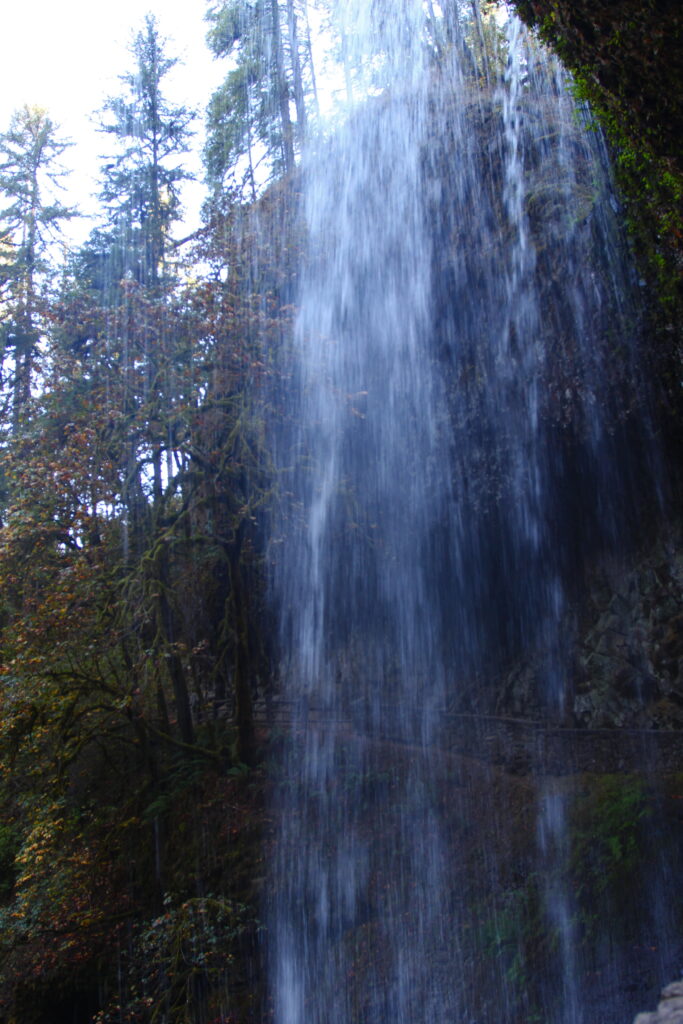
Behind North Falls

Beautiful mossy trees on the trail to Lower North Falls

Lower North Falls

Double Falls would be pretty in spring when there is more than a trickle.

Drake Falls

Middle North Falls

Middle North Falls from behind the falls

Middle North Falls from the side – Winter Falls should be next, but they were off the main trail, and we were told they were dry, so we did not go to them.

Twin Falls – tiny but lovely

North Falls

North Falls from underneath the falls
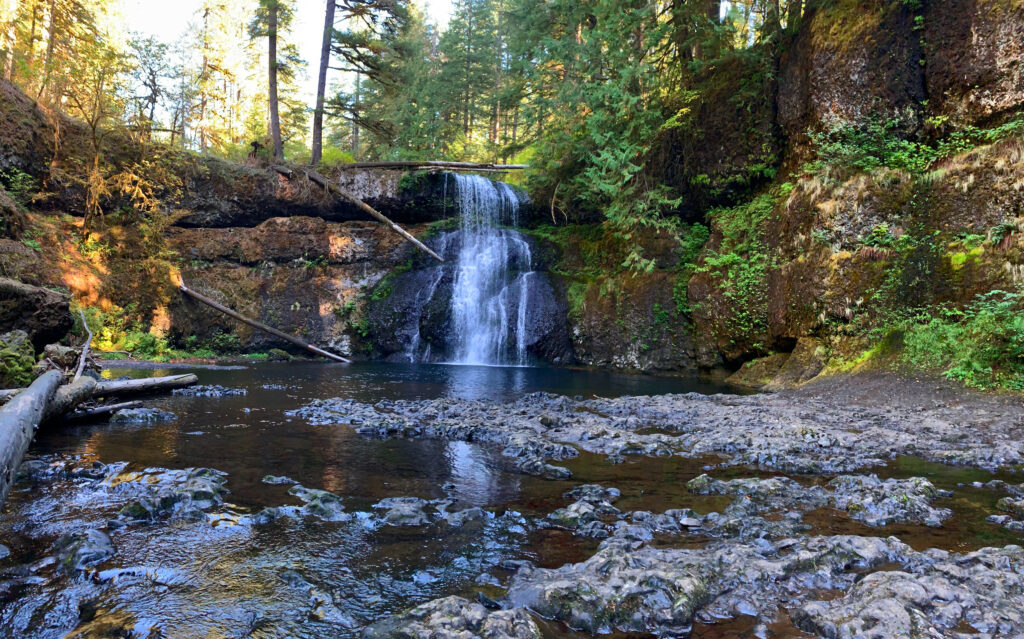
Upper North Falls

Upper North Falls completes the series and leaves a long walk back to the beginning of the loop